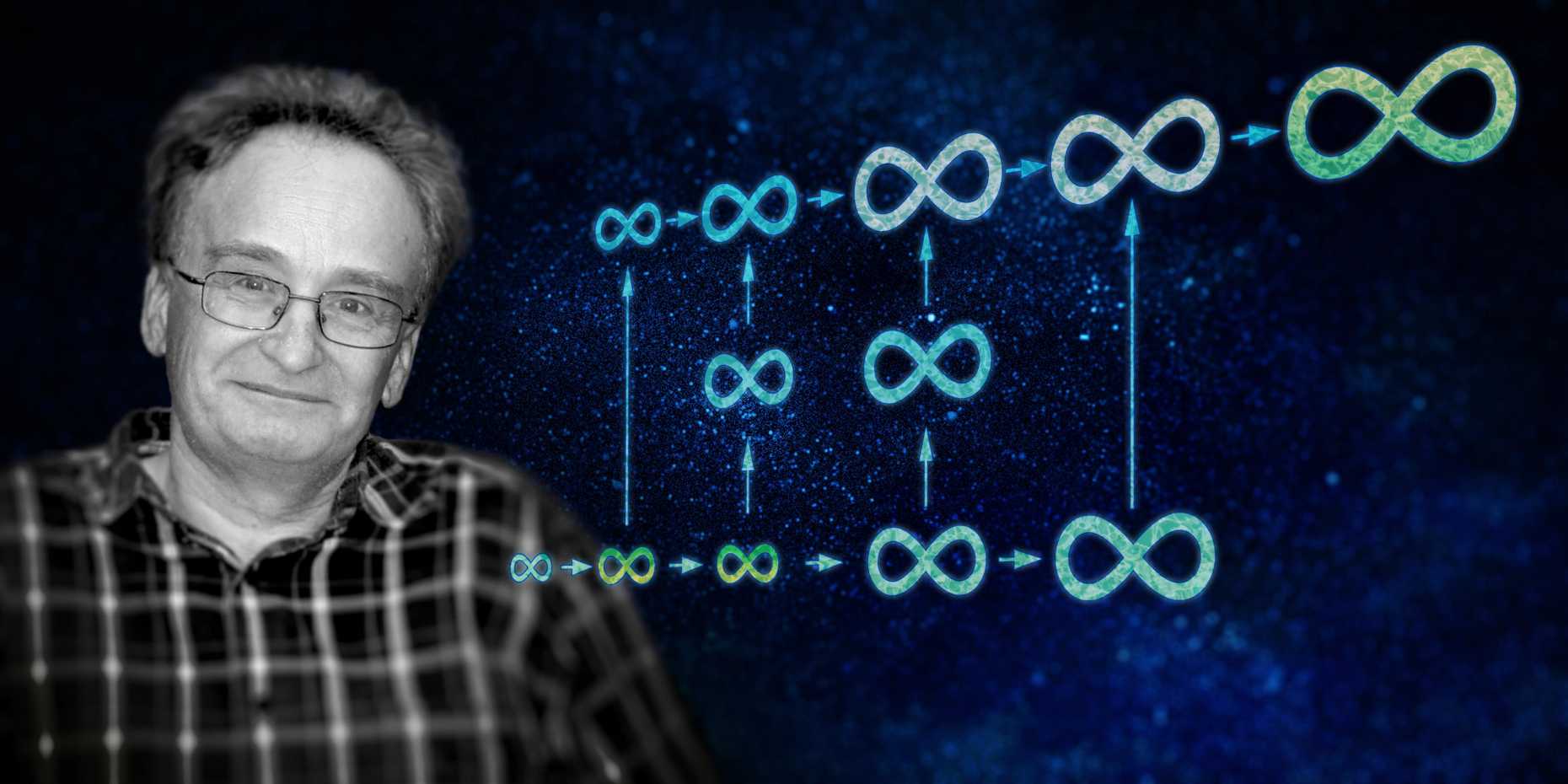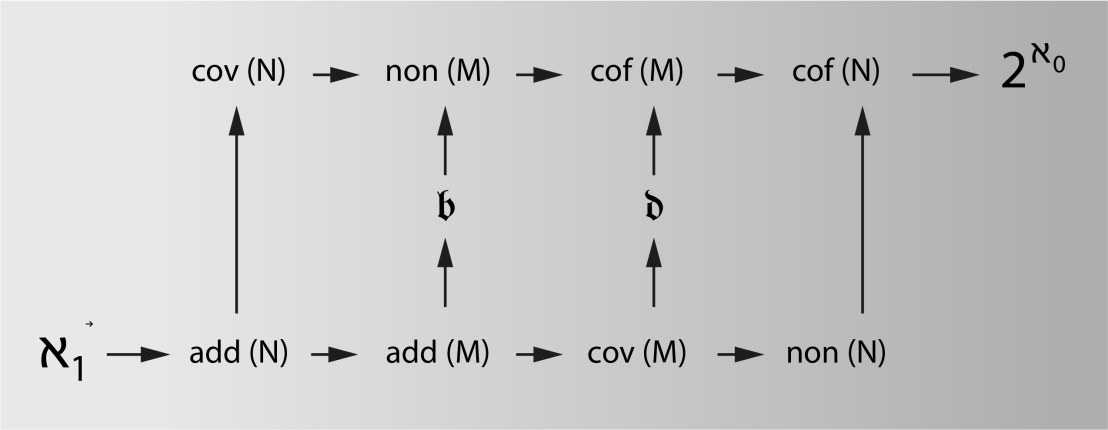The fact that there are many different types of infinities is one of the big puzzles in mathematics. One mathematician who enjoys investigating which infinities can actually occur is Saharon Shelah, the guest speaker at this year's Paul Bernays Lectures.
One of the most astonishing findings in mathematics is the discovery that there are many different types of infinities - and for a long time, it was an unresolved problem whether some of these infinities could be of different sizes without contradiction.
One mathematical logician who has been studying this intensively for years is Saharon Shelah from the Hebrew University of Jerusalem. As the guest speaker at this year's Paul Bernays Lectures, he will discuss the current developments in "Struggling with the size of infinity". Shelah is an established expert on the topic of mathematical infinity. A year ago, he managed to prove with Martin Goldstern and Jakob Kellner from the TU Wien that ten - and no more - infinities can have different sizes and can be arranged according to their sizes in what is known as Cichoń's diagram (see figure).
This was a ground-breaking proof, as history shows: the modern mathematical debate on infinity began with a series of discoveries made in the 1870s by German mathematician Georg Cantor (1845-1918). He used set theory - which he established - to determine that we can differentiate between an infinite number of infinities in mathematics. Cantor understood infinity as a set that contains an infinite number of elements (or numbers). By focusing on the infinite set of natural numbers - those used for counting in everyday life, i.e. 1, 2, 3, 4, 5, etc. - he was able to demonstrate that there are two fundamentally different types of infinities.
Specifically, the "countably infinite" sets, which have the same number of elements (or numbers) as the infinite set of natural numbers, and the "uncountably infinite" sets, which contain more elements. The infinite set of real numbers belongs to the second type. In addition to whole numbers, it also includes negative numbers, fractions, roots and mathematical constants, such as π, etc. Mathematicians refer to the infinite set of real numbers as the "continuum".
As Cantor demonstrated, the continuum is actually bigger than the countably infinite set of natural numbers. This in turn is the smallest infinite set. He also investigated whether there could be another or even several types of infinite sets between the infinite quantities of natural and real numbers. He suspected that this was not the case, and this assumption is known as the continuum hypothesis.
Narrowing down infinity from the plethora
To his disappointment, he was never able to prove this - in fact, no one has managed to establish the proof so far. On the contrary, following the Second World War, logicians Kurt Gödel (1906-1978) and Paul Cohen (1934-2007) proved that the continuum hypothesis can neither be proven nor refuted within the known axiomatic set theory. It can be assumed that there are further types of infinities or that there are none between the set of natural numbers and the continuum. Neither assumption contradicts the premises of this set theory.
Saharon Shelah considers mathematical matters in a completely unbiased manner and is able to see astonishing connections. His instinct for possible solutions is unerring. Lorenz Halbeisen, lecturer and logician at ETH Zurich
Like all mathematical theories, set theory is based on axioms. These are postulates or premises accepted as true from which further mathematical statements must be derived without contradiction. The ZFC axiom system, which traces back to Ernst Zermelo (1871-1953) and Abraham Fraenkel (1891-1965), has been established as the standard system of set theory and thus as the basis of mathematics as a whole. It encompasses nine axioms, including the axiom of infinity through which we can make assertions about infinite sets.
The continuum hypothesis and the question of how many types of infinities exist still keeps mathematicians busy, although the approaches differ depending on the philosophical position. Set theorists such as Hugh Woodin, the guest speaker at the 2016 Bernays Lectures, try to refute or prove the continuum hypothesis by adding new axioms to the ZFC axioms. In doing so, Woodin follows his conviction that there can be only one "correct" set theory model. Saharon Shelah takes another somewhat more "playful" approach. He is said to love solving challenging problems and has stated that his mathematical-philosophical position is hedonism: "Mathematics is fun!"
Shelah is less inclined to ask himself if the continuum hypothesis is unsolvable, but conversely, if it does not trigger a contradiction of mathematical axioms in one way or another, then you can assume that it does not apply and then investigate whether additional types of infinities exist. In principle, an infinite number of infinities could occur between the countable infinity and the continuum. Some can be ruled out: "For infinite sets, any conceivable size is possible that does not conflict with the ZFC axioms," says Lorenz Halbeisen, lecturer and logician at ETH Zurich, who has worked with Shelah.
Shelah developed what is known as the proper forcing technique for this. With this method, ZFC set theory can be expanded with new infinite sets, and very different ZFC models can be constructed in order to verify certain statements. "This technique makes it possible to indicate what is possible in a respective model and which sizes can be ruled out for infinite sets," says Halbeisen.
An instinct for astonishing connections
In Shelah's approach, the size of the continuum - i.e. the number of elements - is changeable and he considers the " problem of the size of the continuum" to be an arithmetic task: how we can calculate with infinite numbers at all (after all, twice infinite does not automatically result in double infinite). This applies in particular to the cardinal numbers with which we specify the size of infinite sets (symbolised using an aleph ℵ). These help characterise infinite sets and arrange them by size. Shelah's pcf theory, which can be used to recognise new connections between cardinal numbers and infinities, is ground-breaking.
In the proof mentioned at the beginning, Shelah and his Viennese colleagues expanded ZFC - on the assumption that the continuum hypothesis was false - by four infinite cardinal numbers. They were thus able to calculate whether the size differed for ten already defined infinities. The evidence demonstrates that the ten infinities are actually different sizes. In addition, all ten infinities can be lined up according to their size between the countable infinity and the continuum. This results in an arrangement of the infinities known as Cichoń's diagram.
At the Bernays Lectures, Shelah will discuss whether such an arrangement of the infinities and the cardinal arithmetic allow new insights into the continuum hypothesis. "The proof that ten infinities can be different in Cichoń's diagram is not just ground-breaking, but also typical for Shelah," says Halbeisen. "He considers mathematical matters in a completely unbiased manner and is able to see astonishing connections. His instinct for possible solutions is unerring."
"Shelah's discoveries have received little philosophical consideration so far, but they could lead to extremely exciting new mathematical-philosophical insights," concludes Giovanni Sommaruga, lecturer on the philosophy of formal sciences at ETH Zurich.
Paul Bernays Lectures 2020
Prof. Saharon Shelah, Hebrew University Jerusalem, Israel
Struggling with the size of infinity
Lecture 1:
CARDINAL ARITHMETIC: CANTOR'S PARADISE
Monday, August 31, 2020, 5 pm, Webinar
Lecture 2:
HOW LARGE IS THE CONTINUUM?
Tuesday, September 1, 2020, 2.15 pm, Webinar
Lecture 3:
CARDINAL INVARIANTS OF THE CONTINUUM: ARE THEY ALL INDEPENDENT?
Tuesday, September 1, 2020, 4.30 pm, Webinar
All lectures are given in English and are self-contained. Lecture 1 is aimed at a general audience; lecture 2 and 3 address the scientific community.








